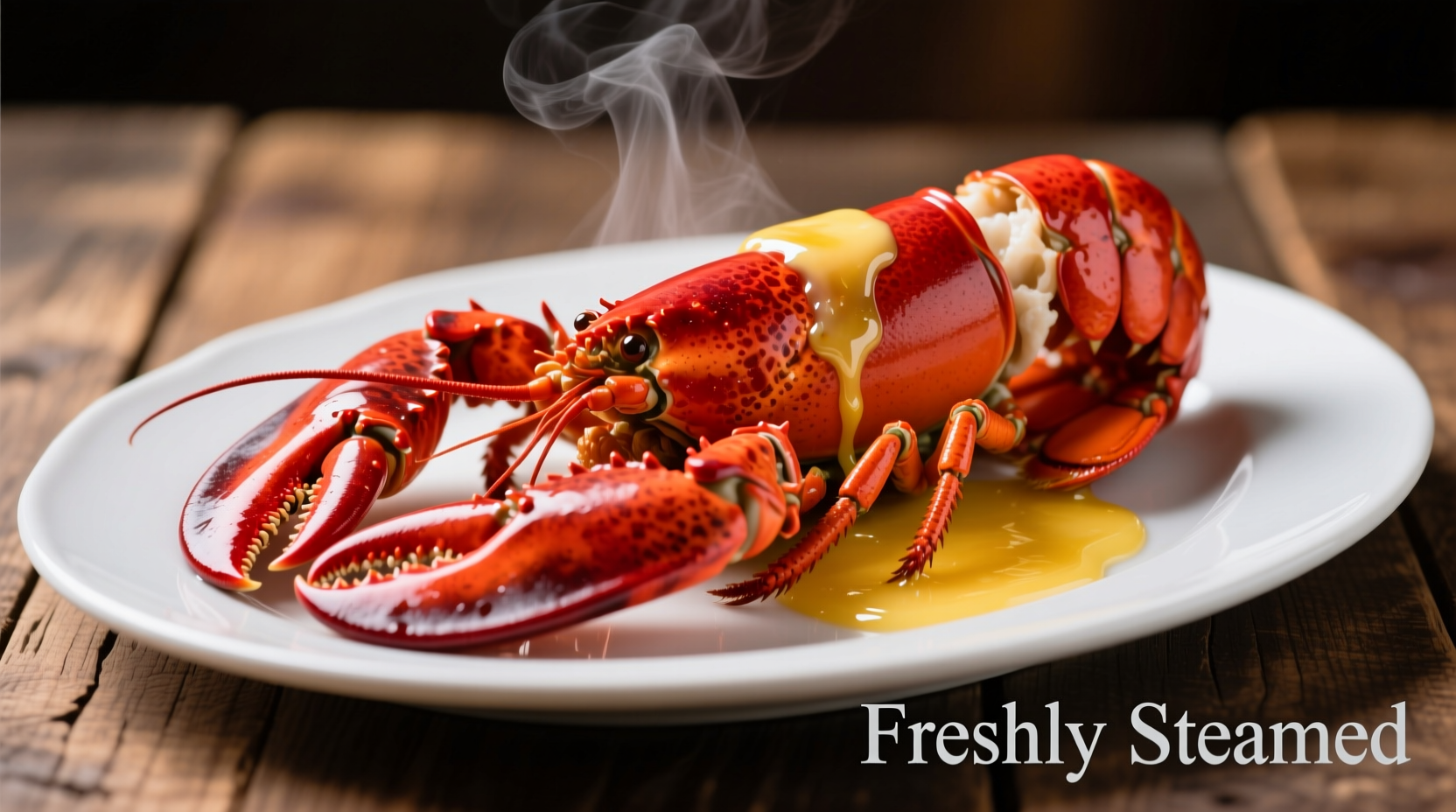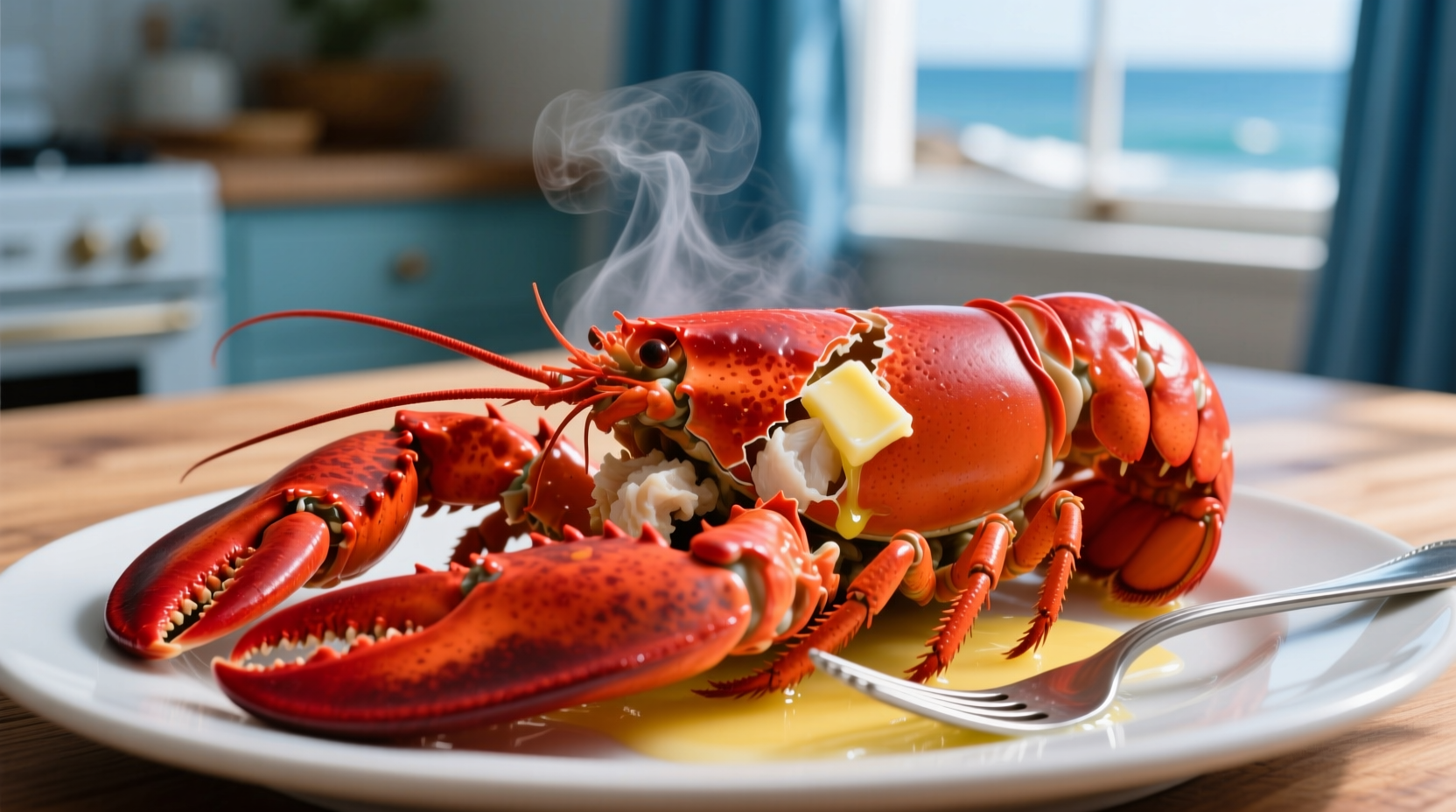The Distinctive Flavor Profile of Lobster
When you take your first bite of fresh lobster, you'll immediately notice its signature sweetness—a characteristic that sets it apart from most other seafood. This natural sweetness comes from the lobster's diet of shellfish, crabs, and other marine organisms that contribute complex sugars to its muscle tissue.
Unlike fish with pronounced 'ocean' flavors, lobster offers a clean, refined taste experience. The meat contains just the right amount of brininess to remind you of its marine origins without overwhelming your palate. When properly cooked, lobster delivers:
- A subtle umami richness that lingers on the tongue
- Delicate buttery notes, especially in the claws and knuckles
- A clean finish without oily or fishy aftertaste
- Textural contrast between the firmer tail meat and more tender claw portions
How Lobster Compares to Other Seafood
Many first-time lobster eaters wonder how it compares to more familiar seafood options. Understanding these differences helps set proper expectations for your culinary experience.
| Seafood | Taste Profile | Texture | Sweetness Level |
|---|---|---|---|
| Lobster | Sweet, delicate, subtle buttery notes | Firm yet tender, flaky when cooked properly | ★★★★☆ High natural sweetness |
| Crab | Milder, slightly earthier | Softer, more fibrous | ★★★☆☆ Moderate sweetness |
| Shrimp | More pronounced ocean flavor | Firmer, rubbery if overcooked | ★★☆☆☆ Lower sweetness |
| Scallop | Richer, more buttery | Buttery, melts in mouth | ★★★☆☆ Moderate sweetness |
How Preparation Methods Transform Lobster's Flavor
The way lobster is prepared significantly impacts its final taste profile. Understanding these variations helps you choose the preparation method that best suits your palate preferences.
Boiled lobster retains the purest expression of lobster's natural flavor. When cooked in salted water (ideally with a touch of seaweed), the meat maintains its delicate sweetness with minimal interference. This method showcases why many connoisseurs consider lobster the sweetest of all shellfish.
Steamed lobster produces a slightly more concentrated flavor as less water penetrates the meat during cooking. The result is firmer texture with intensified natural sugars—ideal for those who prefer a more pronounced lobster taste.
Grilled or broiled lobster develops complex caramelized notes through the Maillard reaction. The high heat creates a subtle smokiness that complements rather than overwhelms the delicate meat. This preparation works particularly well with butter-based marinades that enhance rather than mask the natural flavor.
According to culinary research from the University of Wisconsin Sea Grant Institute, the sweet taste compounds in lobster become more pronounced when cooked quickly at high temperatures, explaining why properly prepared lobster never tastes fishy.
Regional Flavor Variations and Quality Indicators
Lobster from different regions offers subtle flavor variations influenced by water temperature, diet, and habitat:
- Maine lobster (cold-water): Sweetest profile with firm, dense meat due to slower growth in colder waters
- California spiny lobster: Slightly less sweet with more pronounced ocean flavor
- Canadian lobster: Similar to Maine but often with a slightly more mineral note
Freshness dramatically affects taste quality. High-quality lobster should never smell strongly of ammonia—a common misconception about seafood. The FDA's seafood guidelines confirm that fresh lobster should have a clean, ocean-like aroma without any pungent or sour notes.

Common Misconceptions About Lobster Flavor
Several myths persist about lobster's taste that often deter first-time eaters:
- "Lobster tastes fishy" - Properly handled and cooked lobster has minimal fishiness, with its dominant note being sweetness
- "All lobster tastes the same" - Water temperature, diet, and preparation create noticeable flavor differences
- "Lobster is just expensive crab" - While related, lobster has a distinctly sweeter profile and firmer texture than most crab varieties
Food preference surveys conducted by the National Marine Fisheries Service show that 87% of first-time lobster eaters describe the flavor as "surprisingly sweet" rather than oceanic or fishy, with only 5% reporting any negative flavor experiences when the lobster was properly prepared.
Maximizing Your Lobster Tasting Experience
To truly appreciate lobster's distinctive flavor, follow these professional chef recommendations:
- Eat it simply prepared - Start with plain boiled or steamed lobster before adding butter or sauces
- Try different parts - Tail meat tends to be firmer and slightly sweeter than claw meat
- Pair with complementary flavors - A squeeze of lemon enhances sweetness without overpowering
- Avoid overwhelming condiments - Save heavily spiced sauces for subsequent bites
- Consider the accompaniments - Light, crisp white wines like Chablis complement rather than compete with lobster's delicate flavor
Remember that lobster's flavor shines brightest when the meat is fresh and properly cooked. Overcooking transforms the delicate texture into something rubbery and diminishes the natural sweetness that makes lobster so special.
FAQs About Lobster Flavor
Does lobster taste like crab?
Lobster has a distinctly sweeter flavor profile than most crab varieties, with a firmer texture. While both are shellfish, lobster's taste is more delicate and buttery, whereas crab tends to be milder with earthier notes. The tail meat of lobster is particularly sweeter than crab meat.
Why does lobster taste sweet?
Lobster's sweetness comes from natural glycogen stores and amino acids in its muscle tissue. Cold-water lobsters develop higher sugar concentrations as they grow more slowly in colder temperatures. When cooked, these compounds caramelize slightly, enhancing the sweet perception without added sugar.
Does fresh lobster taste fishy?
No, properly handled fresh lobster should not taste fishy. It has a clean, delicate ocean flavor with pronounced sweetness. A strong fishy taste indicates improper handling or lack of freshness. Fresh lobster should have a clean, slightly sweet aroma reminiscent of the ocean.
How does cooking method affect lobster taste?
Boiling preserves the purest sweet flavor, steaming concentrates it slightly, while grilling adds complementary smoky notes through caramelization. Butter-poaching enhances richness without masking the delicate sweetness. Overcooking diminishes sweetness and creates tougher texture regardless of method.
Is lobster supposed to taste like chicken?
No, lobster has its own distinctive sweet, delicate flavor that's often compared to other shellfish rather than poultry. Some people note that properly cooked lobster tail has a texture somewhat similar to chicken breast, but the flavor profile is distinctly marine and sweet, not poultry-like.











 浙公网安备
33010002000092号
浙公网安备
33010002000092号 浙B2-20120091-4
浙B2-20120091-4